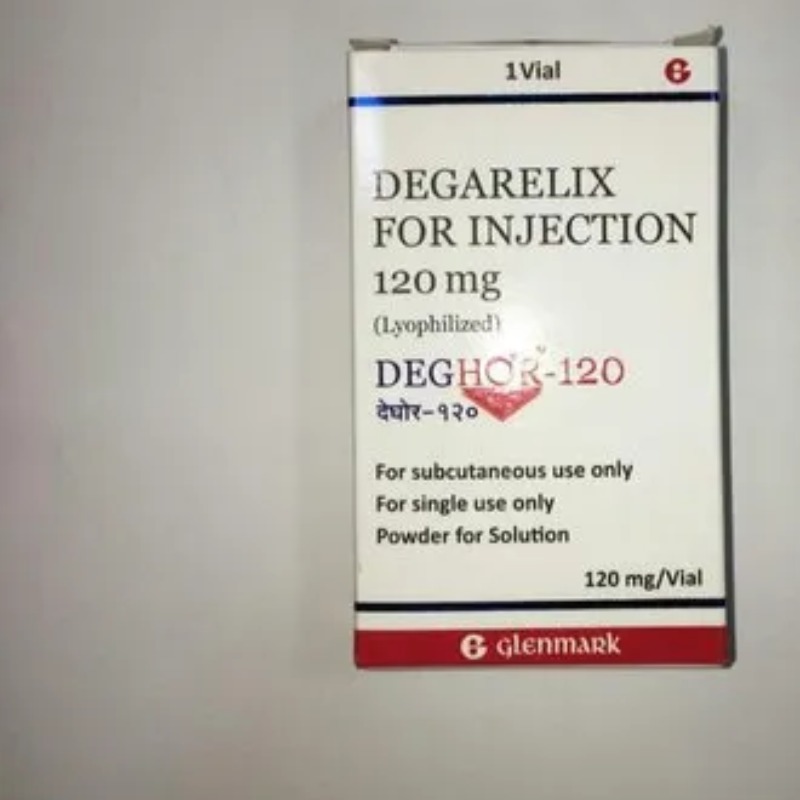DESCRIPTION
MECHANISM OF ACTION
Binds immediately and reversibly to GnRH receptors of the pituitary gland, which leads to inhibition of luteinizing hormone (LH) and follicle-stimulating hormone (FSH) production. Causes a rapid and sustained suppression of testosterone without the initial surge that is observed with LHRH agonist therapy.
ABSORPTION
Not orally absorbed because of extensive proteolysis in the hepatobiliary system. Forms a depot upon subcutaneous administration from which degarelix is released into the circulation.
DISTRIBUTION
Distribution throughout total body water. Approximately 90% of degarelix is bound to plasma proteins.
INDICATIONS
Advanced prostate cancer.
DOSAGE RANGE
Administer 240 mg SC as a starting dose and then 80 mg SC every 28 days.
DRUG INTERACTIONS
None well characterized to date.
SPECIAL CONSIDERATIONS
1. Initiation of treatment with degarelix does not induce a transient tumor flare in contrast to LHRH agonists, such as goserelin and leuprolide.
2. Serum testosterone levels decrease to castrate levels within 3 days of initiation of therapy.
3. Use with caution in patients with congenital long QT syndrome, electrolyte
abnormalities, CHF, and in patients on antiarrhythmic medications,
such as quinidine, procainamide, amiodarone, or sotalol, as long-term androgen deprivation therapy prolongs the QT interval.
4. Pregnancy category X. Breastfeeding should be avoided.
TOXICITY 1
Hot flashes with decreased libido and impotence.
TOXICITY 2
Local discomfort at the site of injection with erythema, swelling, and/or induration.
TOXICITY 3
Weight gain.
TOXICITY 4
Mild elevations in serum transaminases.
TOXICITY 5
Fatigue.
SPECIFICATION


Login To Comment